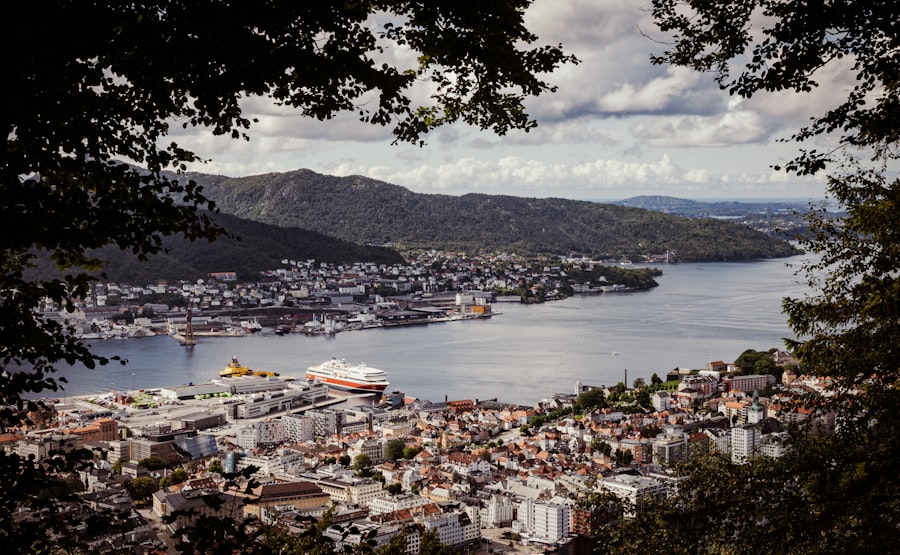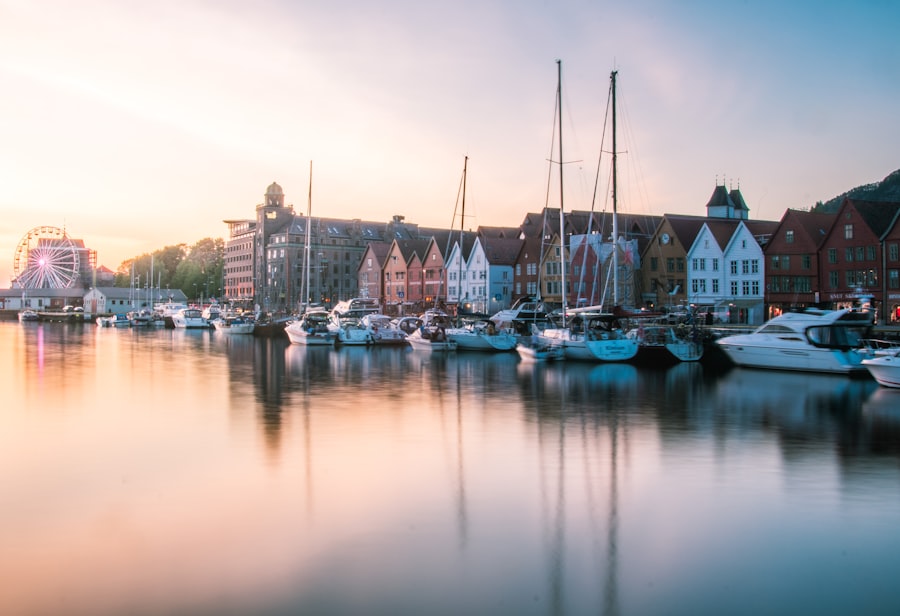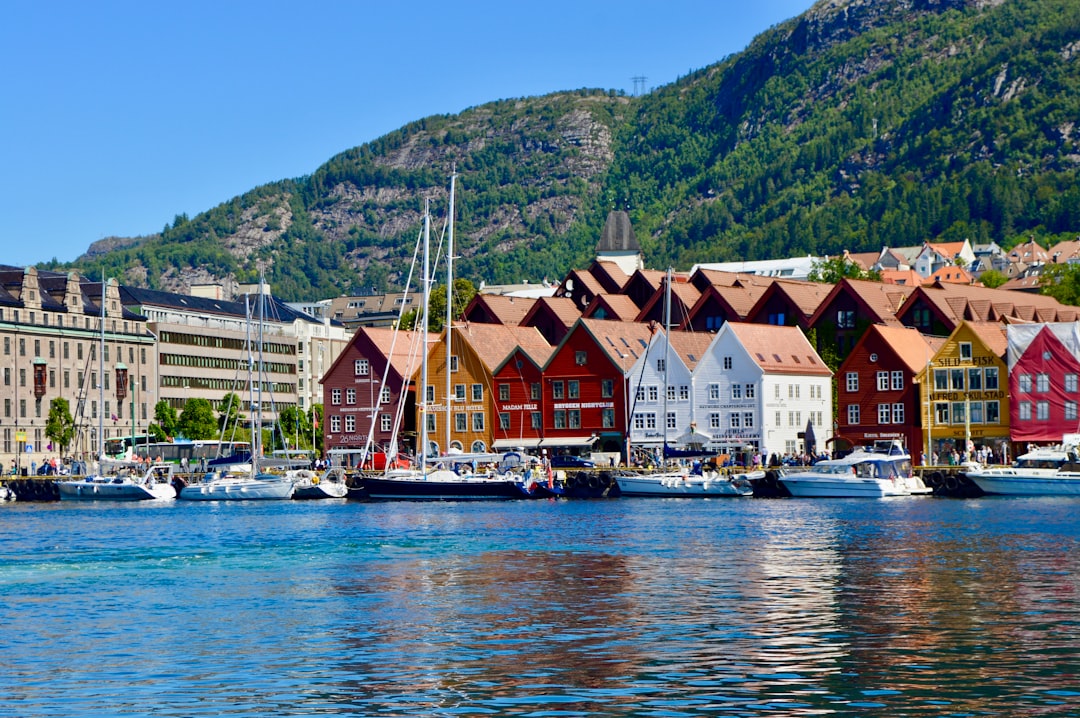Sankthansaften, or Midsummer’s Eve, is a cherished celebration in Norway, steeped in history and tradition. The origins of this festival can be traced back to ancient pagan rituals that marked the summer solstice, a time when the sun reaches its highest point in the sky. This event was significant for agrarian societies, as it symbolised the peak of the growing season and the promise of a bountiful harvest.
The name “Sankthansaften” itself is derived from Saint John the Baptist, whose feast day falls on June 24th. Over time, the festival evolved, merging Christian elements with older pagan customs, creating a unique blend of celebration that resonates with Norwegians today. As Christianity spread throughout Scandinavia, many pagan traditions were adapted to fit within the new religious framework.
The bonfires that are now synonymous with Sankthansaften were originally lit to ward off evil spirits and celebrate the sun’s return. This practice reflects a deep-rooted connection to nature and the cycles of life that have been integral to Norwegian culture for centuries. Today, Sankthansaften is celebrated on the evening of June 23rd, with communities gathering to honour both their heritage and the beauty of the natural world around them. Your journey to a smooth relocation starts here. Talk one-on-one with a Norway Relocation specialist and turn your plan into a reality.
Summary
- Sankthansaften, also known as St. John’s Eve, has been celebrated in Norway since the time of the Vikings.
- Traditional activities on Sankthansaften include dancing around bonfires, singing folk songs, and enjoying fireworks displays.
- Bonfires on Sankthansaften are believed to ward off evil spirits and bring good luck, as well as symbolize the power of the sun.
- Coastal communities in Norway celebrate Sankthansaften with boat parades, beach parties, and seafood feasts.
- Different regions in Norway have their own unique ways of celebrating Sankthansaften, from midnight sun concerts to traditional folk dances.
Traditional Sankthansaften Activities
The festivities of Sankthansaften are characterised by a variety of traditional activities that bring communities together in joyous celebration. One of the most prominent features of this evening is the lighting of bonfires, which serve as a focal point for gatherings. Families and friends often come together to share stories, sing songs, and enjoy each other’s company around these flickering flames.
The atmosphere is one of warmth and camaraderie, as people celebrate the longest day of the year and the arrival of summer. In addition to bonfires, many communities organise outdoor events such as folk dancing, games, and music performances. Children often participate in traditional games that hark back to simpler times, fostering a sense of community spirit and connection to their cultural roots.
The vibrant energy of these activities is infectious, as laughter and music fill the air, creating an unforgettable experience for all involved. As night falls, the glow of the bonfires illuminates the faces of those gathered, creating a magical ambiance that encapsulates the essence of Sankthansaften.
The Significance of Bonfires on Sankthansaften

Bonfires hold a special significance during Sankthansaften, serving as both a symbol of celebration and a means of connecting with ancient traditions. Historically, these fires were believed to possess protective qualities, warding off malevolent spirits and ensuring a prosperous harvest. The act of gathering around a bonfire fosters a sense of unity among participants, as they share in the warmth and light that it provides.
This communal aspect is vital to the spirit of Sankthansaften, reinforcing bonds between family members and friends. Moreover, bonfires are often accompanied by various rituals and customs that enhance their significance. In some regions, it is customary to jump over the flames as a way to cleanse oneself of misfortune or bad luck.
This act is not only symbolic but also serves as a thrilling experience for those who partake in it. As the flames crackle and dance in the night sky, they create an enchanting backdrop for storytelling and singing, allowing participants to immerse themselves fully in the magic of the evening.
Coastal Celebrations and Festivities
Norway’s extensive coastline offers a unique backdrop for Sankthansaften celebrations, with many coastal communities embracing their maritime heritage during this festive occasion. In these areas, bonfires are often lit on beaches or rocky outcrops, providing stunning views of the ocean as the sun sets on the horizon. The sound of waves crashing against the shore adds an extra layer of enchantment to the festivities, creating an atmosphere that is both serene and exhilarating.
Coastal celebrations frequently include traditional boat parades or sailing events, where locals showcase their vessels adorned with flowers and decorations. These maritime activities not only highlight Norway’s deep connection to the sea but also foster a sense of pride in local culture and craftsmanship. As families gather on the shores to enjoy picnics and partake in various games, they create lasting memories that are cherished for years to come.
The combination of natural beauty and community spirit makes coastal Sankthansaften celebrations truly special.
How Sankthansaften is Celebrated in Different Regions
While Sankthansaften is celebrated across Norway, regional variations add richness and diversity to this beloved festival. In some areas, particularly in rural communities, traditional customs are upheld with great reverence. For instance, in parts of Northern Norway, it is common for families to gather in their gardens or fields to celebrate with homemade food and drink while enjoying traditional folk music.
These gatherings often reflect a strong sense of local identity and pride in cultural heritage. Conversely, urban areas may embrace a more modern interpretation of Sankthansaften, incorporating contemporary music and entertainment into their celebrations. Cities like Oslo host large public events featuring live performances from popular artists, food stalls offering local delicacies, and activities for children.
Despite these differences, the underlying themes of community bonding and appreciation for nature remain consistent throughout Norway. Regardless of location, Sankthansaften serves as a reminder of the importance of connection—both to one another and to the world around us.
Traditional Foods and Drinks for Sankthansaften

Food plays an integral role in Sankthansaften celebrations, with traditional dishes often taking centre stage during gatherings. As families come together to enjoy each other’s company, they typically prepare a variety of seasonal dishes that reflect Norway’s culinary heritage. Grilled meats are particularly popular during this time, with sausages and marinated chicken being common choices for outdoor barbecues.
Accompanying these dishes are fresh salads made from locally sourced vegetables, showcasing the abundance of summer produce. In addition to savoury fare, sweet treats also feature prominently during Sankthansaften celebrations. Traditional cakes and pastries are often served alongside refreshing beverages such as elderflower cordial or homemade berry juices.
These drinks not only quench thirst but also evoke memories of childhood summers spent picking berries in lush Norwegian landscapes. Sharing food and drink during this festive occasion fosters a sense of togetherness and reinforces cultural traditions that have been passed down through generations.
Folklore and Superstitions Surrounding Sankthansaften
Sankthansaften is steeped in folklore and superstitions that add an intriguing layer to its celebrations. Many Norwegians believe that this night holds special powers for divination and magic. It is said that if one collects seven different types of flowers on Midsummer’s Eve and places them under their pillow, they will dream of their future spouse.
This charming belief reflects the romantic spirit associated with this time of year and highlights the connection between nature and human relationships. Additionally, various superstitions surrounding fire play a significant role in Sankthansaften traditions. It was once believed that jumping over bonfires could bring good luck or fertility while warding off evil spirits.
Such practices illustrate how deeply intertwined folklore is with the celebration itself, enriching the experience for participants who engage with these age-old beliefs. As stories are shared around bonfires on this magical night, they serve not only as entertainment but also as a means of preserving cultural heritage.
Sankthansaften Music and Dance
Music and dance are vital components of Sankthansaften celebrations, infusing the festivities with energy and joy. Traditional folk music often takes centre stage during gatherings, with musicians playing instruments such as fiddles and accordions to create lively tunes that encourage dancing. Participants often join hands in circles or lines, performing traditional dances that have been passed down through generations.
This communal aspect fosters a sense of belonging and connection among those present. In addition to folk music, contemporary artists may also perform at larger public events during Sankthansaften celebrations in urban areas. These performances often blend traditional melodies with modern rhythms, appealing to a wider audience while still honouring cultural roots.
As people dance under the stars around flickering bonfires, they create an atmosphere filled with laughter and camaraderie—a true celebration of life during one of nature’s most beautiful seasons.
Sankthansaften Customs and Rituals
The customs and rituals associated with Sankthansaften vary across regions but share common themes rooted in community bonding and reverence for nature. One prevalent custom involves decorating homes with flowers and greenery in preparation for the festivities. This practice not only beautifies living spaces but also symbolises growth and renewal—a fitting tribute to the summer solstice.
Another cherished ritual is the lighting of bonfires at dusk, which serves as both a celebration of light and a means of connecting with ancestral traditions. As families gather around these fires, they often share stories about their ancestors or recount local legends that have been passed down through generations. This storytelling aspect reinforces cultural identity while fostering intergenerational connections within families—an essential element of Sankthansaften celebrations.
Environmental Impact of Sankthansaften Celebrations
While Sankthansaften is a time for joyous celebration, it is essential to consider its environmental impact as well. The lighting of bonfires can pose risks if not managed responsibly; therefore, many communities are increasingly adopting eco-friendly practices during their festivities. This includes using sustainable materials for bonfire construction or opting for alternative forms of celebration that minimise environmental harm.
Moreover, there is a growing awareness among participants about leaving no trace after celebrations conclude—ensuring that natural spaces remain pristine for future generations to enjoy. By promoting responsible practices during Sankthansaften festivities, communities can honour their cultural heritage while also protecting the beautiful landscapes that inspire these traditions.
Modern Interpretations of Sankthansaften
In recent years, modern interpretations of Sankthansaften have emerged alongside traditional practices, reflecting changing societal values and lifestyles. Urban areas have seen an increase in public events featuring live music performances, food trucks offering diverse culinary options, and activities designed for families with children. These contemporary celebrations aim to engage younger generations while still honouring cultural roots.
Additionally, social media has played a significant role in shaping how people experience Sankthansaften today. Many individuals share their celebrations online through photos and videos—capturing moments spent with loved ones around bonfires or enjoying traditional foods together. This digital documentation not only preserves memories but also fosters connections between individuals who may be celebrating far from home.
As Norway continues to embrace its rich cultural heritage while adapting to modern influences, Sankthansaften remains a beloved celebration that unites communities across generations—reminding us all of our shared connection to nature and one another.
Register for a Norwegian class at the NLS Norwegian Language School now!

